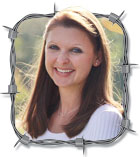Almost all purebred livestock breeders, that I have known have possessed the ability to point to any animal in their herd and recite that animal’s pedigree, backward, through at least ten generations. I’m not sure I can go back any further than three generations in my own pedigree – and even some of those might be questionable.
For cattlemen, though, who raise their own replacement females, knowing which cow family or sire is represented in a particular animal is important for genetic improvement, as well as a source of pride in knowing they continually try to raise the best. Even as a commercial cattleman, my father could rattle off a cow’s family tree that would rival those “begat” chapters in the Bible. I used to, just for fun, point to a single cow and ask, “Now, who is her momma?”
And, then, it would begin.
“Well, let’s see. Polly begat Molly, (Dad and Mom had every cow named), and Molly begat Millie, who begat Tillie. Then Tillie had a bunch of bull calves before she finally calved Snowball, who begat Sweetheart. Sweetheart birthed Toots, and that is the cow you asked about.”
I’d just smile, let a couple of minutes pass, and then ask, “Who was Beauty’s mother?” And off we’d go, again.
The most confused I ever got, though, concerning cow lineages was when Dad would try to explain his favorite cow family — the Blackies.
When we moved from Arkansas to Missouri in the mid-1950s, we were still milking about 10 cows. Dad’s most productive milk cow was an old Jersey-Angus cross, named, unsurprisingly, Blackie. Through the years, as we transitioned to a beef operation, Blackie’s offspring were continually upgraded, with exceptional Angus bulls, and we ended up with a cowherd that contained the original, whose name had changed to Old Blackie. Also in the herd was Young Blackie, Little Blackie, Big Blackie, Fat Blackie, Skinny Blackie, and at least a half-dozen other descriptive Blackies.
It should be pointed out that one of the few times that Dad ever brought in a female from outside of our herd was during the late 1960s, when the Charolais breed was just gaining popularity. Dad had been to the sale barn and purchased a young Charolais heifer calf to raise into a cow in order to try this new breed that everyone was talking about. As you might expect, Mom and Dad named the new, snow-white, colored calf….Whitey?….no, Charmin.
Before Dad passed away, he had semi-retired enough times that he was down to about five cows on his 10-acre farmette. Diagnosed with inoperative cancer, I helped him load up the last of the cows to take to the auction. As the last old cow made her way onto the trailer, he commented, “You know, that cow right there is Big Blackie’s great-great-granddaughter. Ain’t she a good one?”
She sure was.
Jerry Crownover is a farmer and former professor of Agriculture Education at Missouri State University. He is a native of Baxter County, Arkansas, and an author and professional speaker. To contact Jerry, go to ozarksfn.com and click on ‘Contact Us.’







